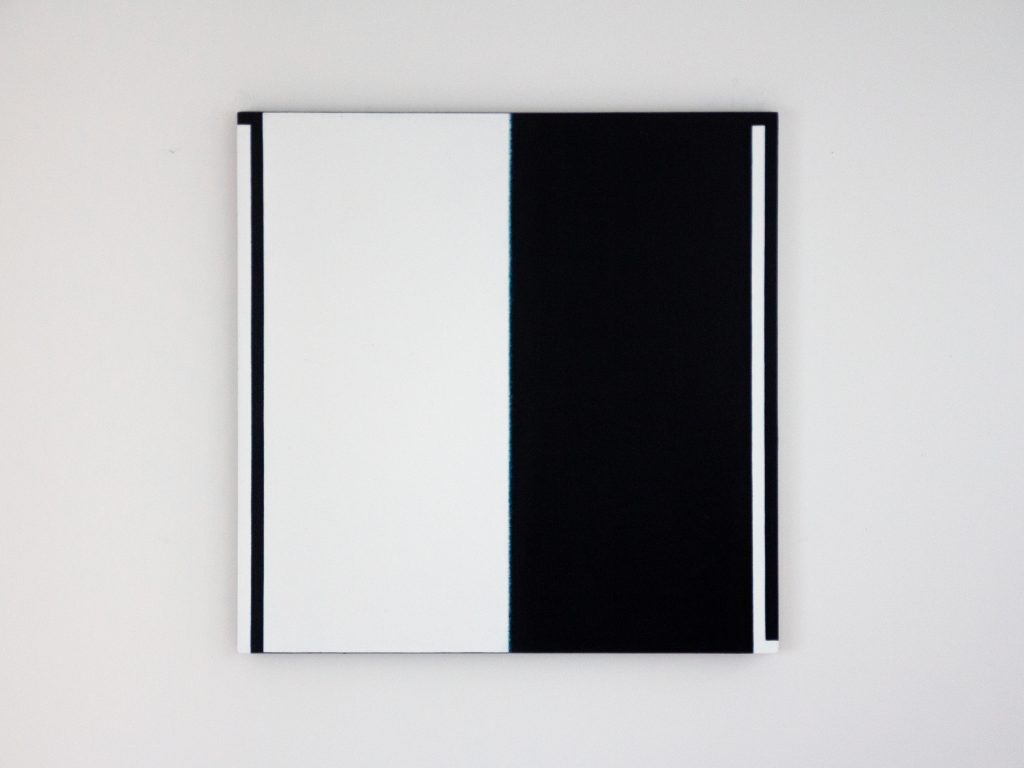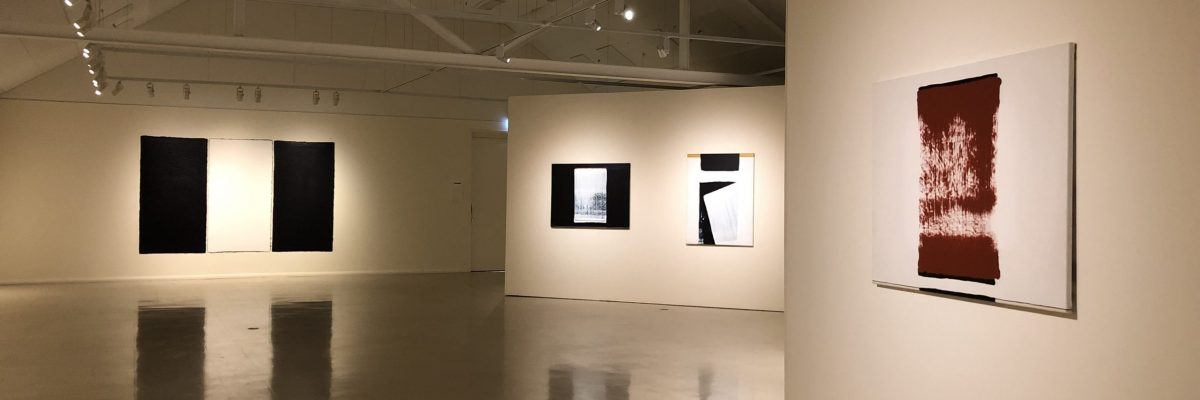After decades studying Māori art, and that of central desert aboriginal artists, Peter Adsett brings new dimensions to his medium of abstract painting. He shares with the latter a technique of horizontality, working flat on the ground, since by this means he avoids looking at the world across distance, with a measuring eye, and thus achieving “good form” (gestalt), which he understands as a kind of picturing. Picturing, in turn, is the imitation of a model, an original, that remains outside painting, at a remove from the material object, the canvas.
Adsett’s tertiary education at Palmerston North Teacher’s College under Cliff Whiting, Frank Davis and others, also shaped this approach to his medium, as did his childhood apprenticeship in his father’s cabinetmaking workshop in Gisborne. Following his move to Australia in 1981, Adsett gained an M.F.A. from the Northern Territory University, and a Ph.D. from Australian National University and has worked closely with artists from the central desert.
Growing up in the vicinity of Matawhero, near Turanganui-a-Kiwa / Gisborne, fostered an early sense of historic injustices. In recent decades Adsett has dealt with the related massacres at Matawhero, and Ngatapa Pa (Matawhero, Bullet Holes and Bandages, 2009; Betrayal 2012), both exhibitions having been endorsed by Ngāi Tāmanuhiri elder, Olivia Horowia Bradbrook, before travelling to different sites in the North Island of Aotearoa.

Images:
Tri-Nations 1st 2nd 3rd Test, 2021
Tri-Nations 3rd Test, 2021
Number 8 (diptych), Foul Play Series, 2021

In late 2019 Adsett showed a two-part exhibition at PAULNACHE entitled October, and Navigation. The show marked the 250th anniversary of Cook’s landing in Poverty Bay, a highly sensitive event for the local population. The paintings were devoid of any imaginable expressiveness, being constructed from pale, cream-coloured raw linen. All the markings – vertical lines of black, cream and grey acrylic – were banished to the far extremes and side edges of the stretcher. On the reverse side of each painting is the date of a particular conflict from colonial times. The series signalled history’s general silence on such matters. On a neighbouring wall, the theme continued with a vast wall on which the painter combined black geometry with erased drawings, leaving ghostly imprints, nails and holes, and naming the whole, with unmissable irony, Navigation.
Adsett’s most recent work, made during the long Covid-19 lockdown in Victoria, has turned to “black and white relations” in a trio of paintings titled Tri-Nations. Begun at the time of the ‘All Blacks’ rugby success in Australia in 2020, and coinciding with the ‘Black Lives Matter’ protests in the USA, with its echoes in Melbourne and Sydney, the work develops a significant aspect of the October series. With his habitual ironic humour, Adsett focusses the spectator’s gaze on the off-sides, the edges of the (‘playing’) field. The surprise produced by this wit is more than a match for the deft, balletic play of the kiwi team.
Travelling back and forth between New Zealand and Australia, for the purposes of teaching and exhibiting, and maintaining close, familial links in both countries, the painter has created his own one-man cross-Tasman ‘bubble!’ – extract from an essay by art historian Mary Alice-Lee.


